Motorhomes, or RVs as they are called in the States, are great fun to drive. They give you a sense of freedom, and we have used them many times to explore places such as the United States, Canada, New Zealand, and Australia. If you are considering hiring a motorhome, the following tips will help you enjoy your experience.
Do a test run
If you have never driven a motorhome, hire one for a few days. This will allow you to familiarise yourself with the vehicle’s size, how it works, and what you prefer to live with. You might discover, for example, that you prefer a separate toilet and shower room.
If you are planning to drive abroad, it is much easier to practice beforehand without the additional challenges of being in an unfamiliar country, maybe driving on the opposite side of the road and still jetlagged.
Determining what is important in a motorhome
Everyone has different priorities. Below are the different things to consider. Of course, your priorities have to be balanced with the costs. Motorhomes are not cheap, but they provide an excellent way to tour a country and see as much as possible.
The age of a motorhome
Hire companies tend to have motorhomes of a particular age group.
For example, Maui motorhomes in Australia are generally under 2 years old, whereas Britz are 2-5 years old. The same parent company owns Maui and Britz and offers similar services.
Older motorhomes are cheaper, but as they are used constantly, they take a lot of knocks inside. We returned one motorhome we hired because it had so many things wrong; my husband counted 25 faults. The children couldn’t sleep in the top bunk because the safety bar was broken, so they had to share a bed. The handle came off a door every time we tried to open it, and the door under a bed kept swinging open and whacked everyone’s chins. These were just a few things from the list.
Every time a motor vehicle is returned, it should be checked and problems fixed, but the turnover time is very quick. Also, people don’t like reporting things that break in case they get charged. Newer vehicles have fewer faults.
How big a Motorhome
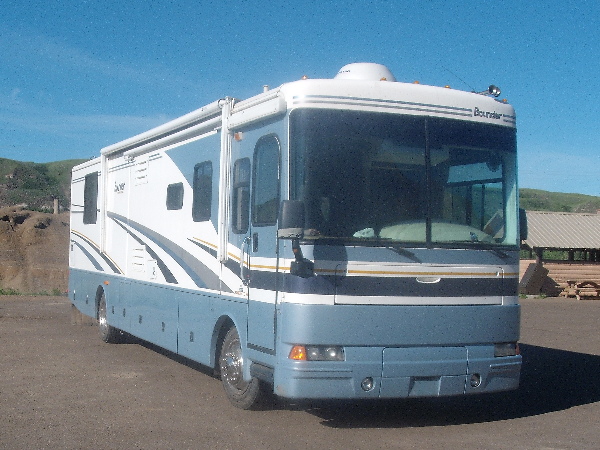
Motorhomes are hired by the number of berths. You obviously want a bed for everyone, but you might consider getting a larger vehicle for more room. This will also give you more cupboard space.
However, more berths mean a longer motorhome. Longer motorhomes can be harder to manoeuvre out of parking spaces; you also have fewer pitch choices at the campsite.
Which Facilities do they have
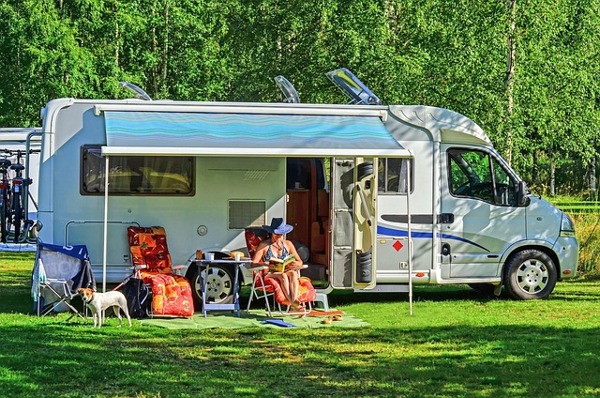
Deciding what facilities you need in your motorhome is a personal choice. What is important to you: toilets, showers, an awning, a microwave, an internal walk-through, or a separate bedroom?
A separate toilet and shower is helpful if there are a lot of you or you have children. You don’t want to be in the middle of a shower when someone is desperate for the toilet. I also found the toilet gets wet if you have it in the same room as the shower; even if you haven’t used the shower, it leaks sometimes. With a separate shower, I could leave clothes dripping in the shower room while driving.
Awnings can be important if driving in a hot country. Motorhomes can get very hot and stuffy, especially when you are cooking. It’s nice to sit outside and enjoy the beautiful countryside under a bit of shade.
A separate bedroom is excellent for privacy but also good if you have children who need time apart. We travelled for 6 weeks across Australia, and our oldest daughter sometimes found it difficult to spend 24 hours a day with her three younger siblings. It can be hard living on top of each other on long holidays.
Outdoor storage area
Some vehicles have very large outside storage areas where you can store loads of things, including several bikes. These are useful for storing suitcases; otherwise, see if you can buy a suitcase that collapses. We brought bags that looked like duffle bags on wheels. Don’t store anything valuable in the outside storage, as it is easy to break into. We stored water bottles and extra toilet paper in this area.
A generator
Some motorhomes have a generator. A generator is an engine that runs on petrol (gas) and produces electricity. A battery in your vehicle holds enough power to work your lights. You need to be connected to mains power or use a generator to power the sockets. This means you won’t be able to use a microwave, charge up your phone or use a hairdryer if the sockets have no power.
You don’t need a generator if you stop at a campsite each night and connect to a power supply. However, when we had a generator, I did use it in the middle of the day to power the microwave.
A generator allows you to camp in places without electrical hookups, such as campsites, national parks, or free camping.
There is often a charge to use generators, which you pay at the end of your holiday. There can also be restrictions on when you can use your generators, as they can be noisy. Your generator won’t work if you are low on fuel.
What is included in your motorhome
When we first started using a motorhome, bedding and kitchen equipment weren’t included with the motorhome, but now some companies include it.
Always check out what is included. We often found it was cheaper to buy our bedding. We buy cheap pillows and sleeping bags from the supermarkets, and at the end of our trip, we donate them to the local charity shop. Usually we bring our own pillowcases as they don’t take up much room. The hire company’s kits are called personal kits and include tea towels, dish clothes and face clothes, which you will also need to buy or bring with you. I also take a spare cloth to wipe the vehicle’s windows and mirrors.
Even if kitchen equipment is included, you might still want to buy extra equipment to add to it to make things easier, such as a toaster or cheese grater.
Additional things to hire
Companies might rent camping tables and chairs, children’s seats or booster seats, satellite phones, and a first aid kit. I would take my own basic first aid kit because as soon as you unseal the kit, you have to pay an additional charge, even if you only removed a plaster.
Sometimes equipment is rented out per trip, other times per day. We have brought camping tables and chairs from Walmart as it worked out cheaper, and we go there anyway to stock up on our food.
Check out the insurance options
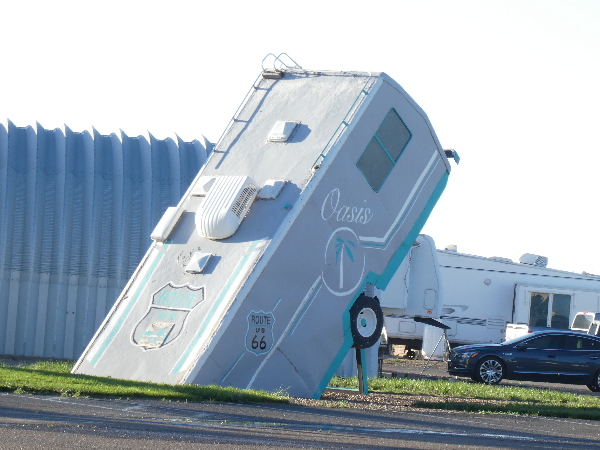
You pay a hefty amount for motorhome insurance and still have to pay the first part of any claim.
With some companies, you can pay extra and get a zero-damage plan, which means you won’t pay anything if any damage is done. Obviously, they have some exemptions. You might want to consider this if you are new to motor homing.
In the USA, with Cruise America, you must pay up to $2500 if your vehicle is damaged. We usually don’t take out this extra amount. When we drove on our first big trip from one side of the states to the other, we realised the cover would have given us peace of mind because, on the first day, our daughter drove dangerously close under low-hanging branches. Unfortunately, you can’t add it on after you start driving.
On our next trip, we took out the zero-damage plan, and on the first day, I hit another vehicle. Thanks to the plan we had taken out, we didn’t have to worry about the costs.
We have only had one accident and driven motorhomes numerous times, but accidents can happen, and often, it is not your fault. It might be a good option if you are inexperienced at driving large vehicles or want peace of mind.
The zero-damage plan is charged per day. It is a personal choice you should consider before picking up your vehicle. You might find it cheaper to take out your own insurance to cover this.
Planning your route
One way trip
It is possible to hire a vehicle from one place and drop it off at another town. We did this when we drove from the East to the West Coast of the USA.
There is an extra charge to do this, but it can be worth it in time and money. Ensure your rental company approves the one-way trip before you finalize your plans.
If you plan to return your rental on a Sunday or national holiday, ensure it is open.
How far each day
If you are happy not planning anything and just hoping a campsite has a space, you don’t need to book anything. However, camping spots, including free camping spots, can get packed during the busy season. If you haven’t booked a campsite, you don’t need to worry about getting there on time, but you will need to spend the end of the day searching for a vacant place to park.
I know my limit is 250 – 300 miles a day. If necessary, I can go further but I must have a shorter journey to recover the next day. I wouldn’t drive 250 miles every day, as that wouldn’t leave much time to explore places. If you drive in Europe, where there are many towns and traffic, you might want to drive less than in the Australian outback or other remote areas, with long roads and little traffic. A mixture of long and short journeys works best.
It’s best not to plan your route like a military march; you want to have some flexible time in case you are delayed. We have had problems with our motorhome a few times, which meant we needed to drive to a different town and spend hours waiting for the issue to be fixed.
Google Maps is great for estimating the time of a journey, but they were seriously wrong on the Great Ocean Road, in Australia. When driving a motorhome, you can go the same speed as cars on straight roads, but when there are lots of curves, you can’t go quite as fast. Additionally, when we reached the Great Ocean Road, it started to rain hard, and because it got so late, it became dark. We arrived very late at our campsite and fumbled in the dark, looking for a spot that wasn’t flooded.
Allow extra time when going on curved roads or in mountain areas, as estimated time is better suited for car speeds.
Don’t plan on going far on the first day
The day you pick up your motorhome is the most stressful. You won’t get your vehicle until mid-afternoon.
You will then need to get some food supplies. Drive to your campsite. Cook or buy your evening meal. Unpack all your belongings and food supplies. Finally, you need to make your beds. If, after all this work and the stress of driving a strange vehicle in a foreign country seems hard work, don’t worry; things get easier. The less time you drive that first day, the sooner you can relax.
Don’t head straight out into remote areas
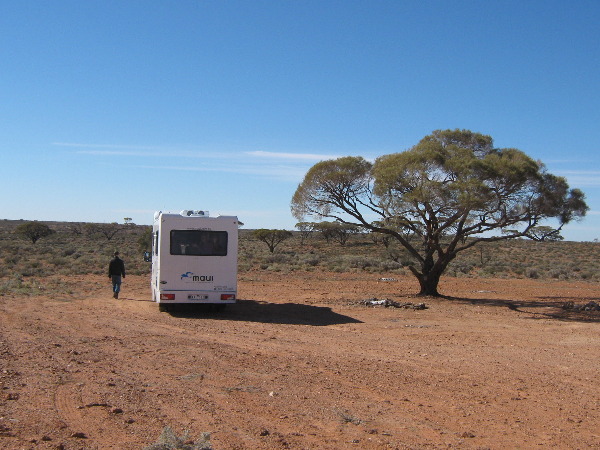
Occasionally, we spot problems with our motorhome after picking it up.
It’s best not to travel too far from your hiring company immediately as you might have to return if you discover something is wrong. If you have hired your vehicle from a large chain, you can pop to another branch while on your road trip and have them sort it out.
If you are heading into a remote area such as the Australian outback, it is best to have time to check that everything is working and you are confident you know what you are doing before heading out.
Find out restrictions on routes
Most companies won’t let you take your motorhome on unmade roads. I found this a bit frustrating in Australia, but when I had to drive on unmade roads, it wasn’t a comfortable experience.
In the USA, you can’t take your motorhome into Death Valley in July or August, and driving through tunnels in Manhattan is illegal.
Visiting large towns
Parking your motorhome just for a few hours can be problematic in some cities, especially in the USA. In very large towns you might have to park outside the city and use public transport to get in. An online search can provide the answers you need.
In one city in America, motorhomes weren’t allowed in the public carparks, and there was no public transport we could use. In the end, we found a carpark that was used for a sports event, and we had to book a place weeks in advance and fill out lots of paperwork.
Book your holiday parks and campsites
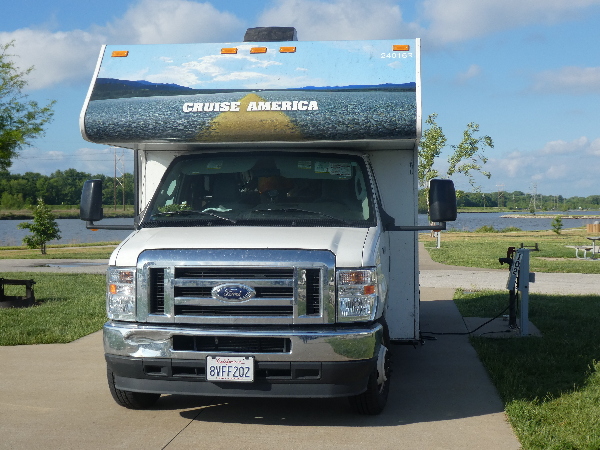
Part of the fun of a motorhome is the freedom to drive wherever and whenever you want. Booking campsites reduces this flexibility but gives you peace of mind.
Some campsites offer just a place to park, while others have swimming pools, restaurants, and evening entertainment.
If this is your first time using a motorhome, choose a site with a hard standing, water and electric connection, and a grey water drain. You also need a dumpsite at the campsite.
As you gain more experience, you will be able to cope with a site that is not level and judge how long you can go without electricity or need to fill up your water tank and empty your waste water.
If you plan to leave a campsite early, check with the campsite site beforehand. Once, we had to leave early for a balloon flight and found they locked the gate at night and opened it too late for us. Another time, we couldn’t leave before the office opened at 9:30 as we had to return the toilet key, which we had paid a deposit for. We decided not to use their toilets, which was a problem as the nearest dump site was 50 miles away, and our toilet needed emptying.
The more facilities a site has, the more you pay. Prime sites near a river or the sea also cost more.
In Australia, Discovery Park and Top Parks are among the largest groups of holiday parks, and the Big 4 Holiday Parks provide some fantastic places that children would never want to leave.
If you are in Canada or the States, consider the Kampgrounds of America (KOA), a large group of independent campsites.
You never know what you will get with independent campsites. So, do some research. KOA sites must reach a certain standard before acceptance, but others vary considerably. Independent sites can be cheaper, and some can be small. You might have somewhere on a farm, or it looks like a carpark. You might also discover why concrete bases are so valuable for parking on. Even the slightest slope will send your crockery sliding down the table.
National parks are cheaper and have some stunning locations, but they are very popular. Some can’t be pre-booked, and others are booked within minutes of their release date.
Free camping/Boondocking
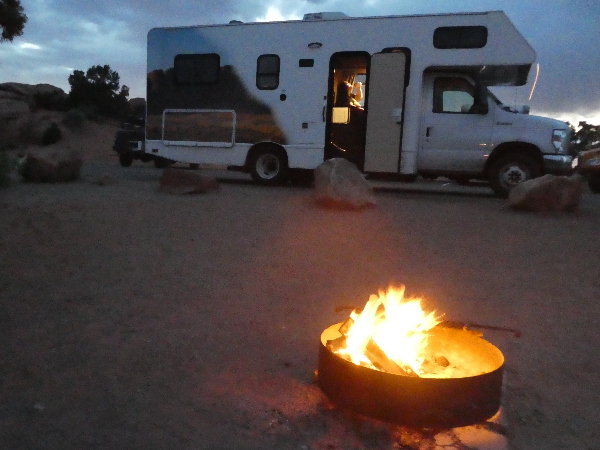
Free camping/boondocking is when you park in an area that isn’t a campground or holiday park. This place could have toilets and a tap for running water but not much else. Often, there might be a box for a donation. Otherwise, it might be in a supermarket carpark or an isolated secluded area with no cost but no facilities.
You can’t book in advance and are limited on how many days you can stay. We were lucky and always managed to find a spot. However, often, there was only one spot left for a vehicle our size. Consider a few alternative sites as a backup.
I found the people on these sites friendly, and you got to mix more as you chatted while queuing for the tap.
You used to be able to park in the Walmart car parks in the evenings with permission from the store manager, but in some areas, this is not allowed anymore. We did this in Canada when we had vehicle problems. However, it is not a pretty place to park.
Each state has different parking rules, so be careful if you pull over by the roadside for the night. In some places, it is not allowed.
What should I pack?
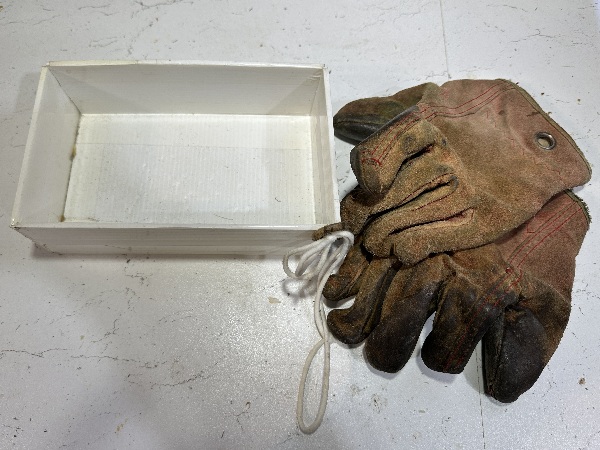
Don’t pack too many clothes. If you stay at campsites, there will be washing machines and dryers. Be aware that it can be chilly in the mornings, depending on where you go. Take a long-sleeved shirt if you are in a mosquito area.
Motorhomes rarely have coat hangers, so take your own if needed. We take a travel washing line and pegs. Some campsites don’t allow you to put up washing lines, but we found hanging our towels outside after swimming helpful.
We take a pair of workman’s gloves to use when emptying the toilet in case of a spillage. Disposal gloves would do. We take workman’s gloves because we did this is at the beginning when the toilet cassettes were under the vehicle, and we were concerned about poisonous spiders in Australia.
My daughter made some cardboard boxes that fold flat and form a box when you pull the string. These are super easy to pack. We use them to store all sorts of things. Usually, there are no shelves next to the bed, so my glasses and phone go in the box.
Many cupboard spaces are just large open areas; everything moves when you drive. Small items can be placed in the boxes.
Bring shampoo, conditioner, and shower gel in bottles with hooks. Even if your motorhome has a shelf, you often need a hook in the campsite showers.
The beginning of your trip
Book a hotel for the first night or two.
When you first start driving an RV, you need to be alert and refreshed, especially if you are driving on the other side of the road. When I went to Australia, it took me a couple of days to get over the jet lag.
Some companies will not even rent to overseas travellers who arrive in the country less than 24 hours before they pick up their vehicle.
When you book your hotel, consider how you will get to the rental place. Sometimes, you can get a taxi. However, if you have a large family and lots of suitcases, it might be easier to leave your bags at your hotel and bring the motorhome back to pick them up. In that case, book a hotel where you can park a motorhome; underground car parks won’t work.
Picking up your Motorhome
Often, you can’t pick up your RV until about 1 p.m. Once, we were told we could pick it up at 11 a.m., but we still had to wait 3 hours for it to be ready. Even if your vehicle is ready, it usually takes a couple of hours for the paperwork to be sorted out and for them to show you around the vehicle.
If you are a first-time user, there is a lot to remember. You need to understand how the water and electricity work, empty the grey and black water, read the control panel, etc. You will also be shown how to make up a bed that is a table during the day.
Often, the information you need to understand is on their website, and it is a good idea to read and understand it before you arrive.
Get familiar with the first day’s route
Use Google Maps to examine your first day’s route. It can be reassuring to see that there will be no strange layouts or turns. If you don’t need to concentrate too much on the route, you can pay attention to other things, such as driving within your lane.
It is easy to centre yourself wrongly when driving on a different side of the road, but it becomes second nature after a day or two. With a car, it is not too much of a problem as you have more leeway, but in a larger vehicle, you need to keep accurately within your lane.
Make a departing campsite list
Once, when we started to drive off, we noticed we were still connected to the power supply. Another time, we didn’t close the fridge properly, and the eggs fell out and sploshed up and down the floor until we could find somewhere safe to stop. Before you move the vehicle, there are lots of things to check.
We found it easiest to make a checklist of things to do before departing in the morning. After a while, it becomes routine. Each motorhome has slightly different requirements.
You can’t have anything on the work surfaces. Sometimes, cupboards have a button to push to lock them while on the move. The air ventilation flaps need to be closed. You might need to switch over the power supply on your fridge and turn off the water pump. Don’t forget to check if the shampoo is left hanging in the shower; it often falls. Make sure all the hook-ups outside are disconnected and your awning is closed.
Our morning routines get quicker over time. Often, we would have to put away a bed and sometimes convert a bed into a table.
Returning your motorhome
You usually have to return your vehicle in the morning. They expect you to return the vehicle clean, so you must do most of your packing and cleaning the night before. You might only have a small vehicle, but it takes a long time to sort out.
Returning your vehicle should be quick, but we have turned up at a major rental place only to discover no one there. We had to wait an hour for the owner to turn up. In very popular places, a queue can be waiting to return their vehicles. Make sure you allow plenty of time if you are catching a plane. They will need to quickly check the vehicle, ensure you have returned it with the correct amount of fuel, and settle any necessary payments.
Summary
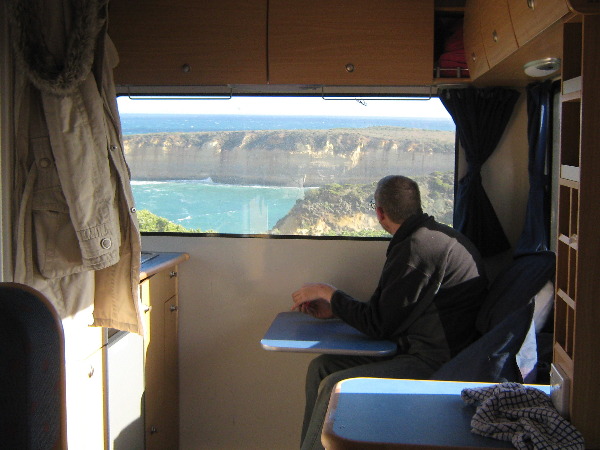
We have had great adventures in our motorhomes and stopped at breathtaking places. Nothing is better than pulling back your curtains and seeing the beach in front of you or snow-capped mountains around all sides.
We had breakfast in a layby next to the Grand Canyon, pulled over for coffee in the Australian outback and watched the stars at night in remote areas of New Zealand. We couldn’t have stopped in so many remote areas without a motorhome.
I hope you enjoy motor homing as much as we have.

Leave a Reply